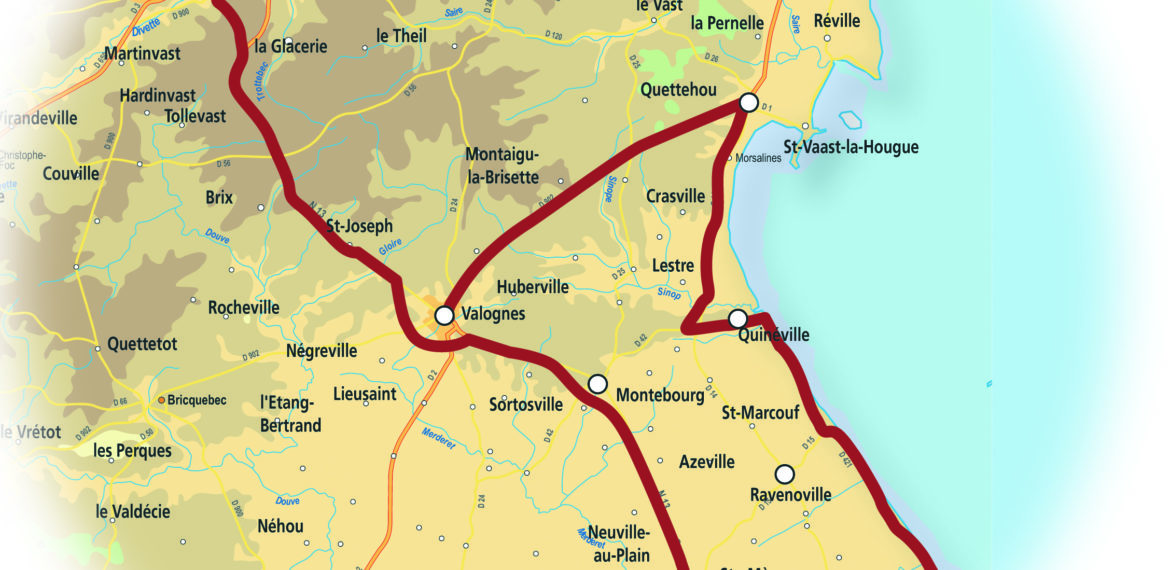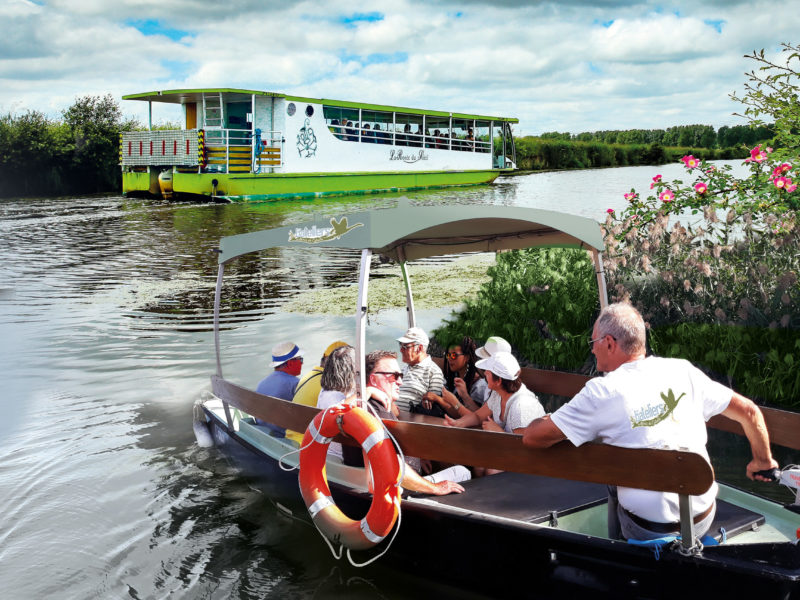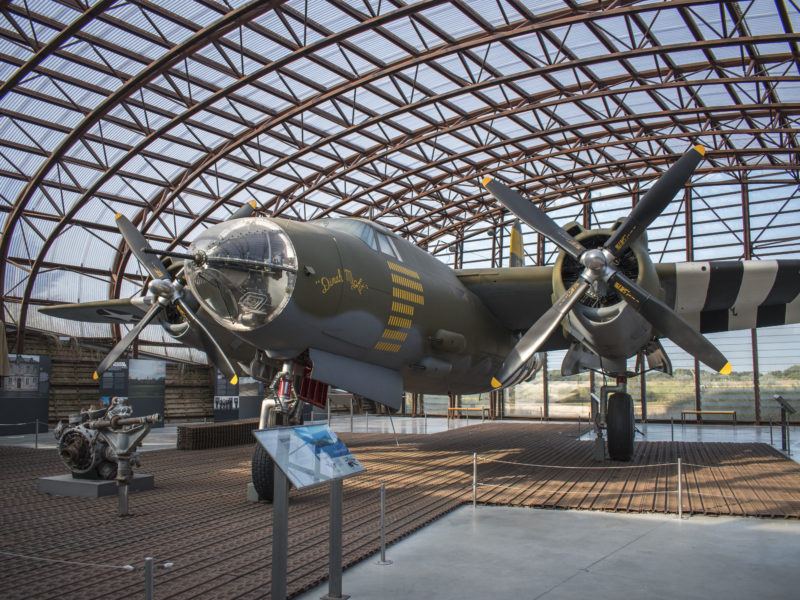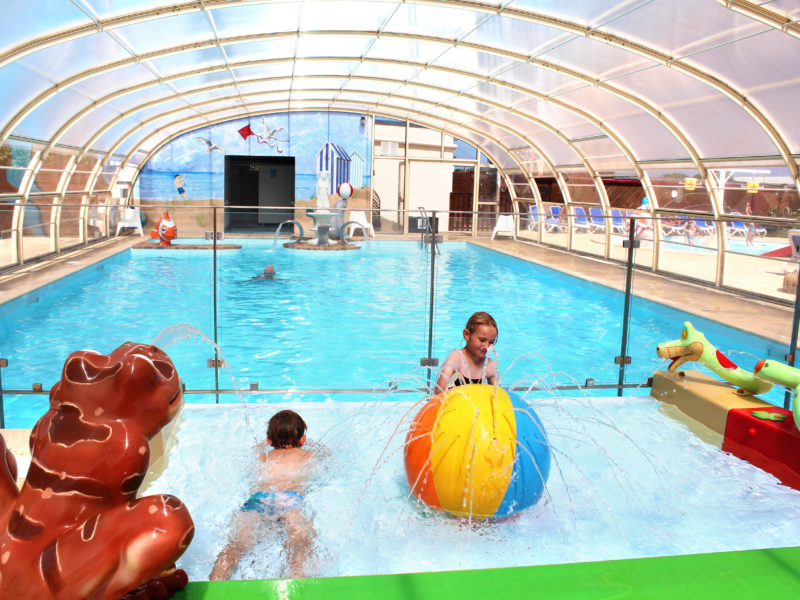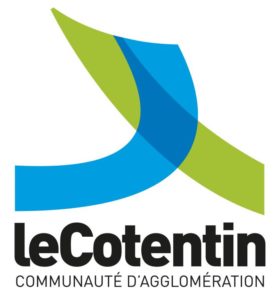DISCOVERY TOUR IN THE BOCAGE, THE MARSHLANDS, THE LANDING BEACHES IN NORMANDY
Between the Normandy countryside and the landing beaches
CHERBOURG: At the top of the Roule mountain, inside the Fort du Roule, the Liberation Museum evokes the daily life of civilians in Cherbourg and its surroundings, from the invasion to the reconstruction.
From Cherbourg take the N13 via Avenue de Paris to Valognes.
VALOGNES: “City of Art and History”, an ancient city seriously bombarded in 1944, but well rebuilt – its 17th and 18th century mansions earned it the title of “Norman Versailles”. The most famous is the 18th century Hôtel de Beaumont (open to visitors). Discovery of the public library, the former Royal Benedictine Abbey of the 18th century. Regional Museum of Cider and Calvados. In the northeast of the city, Alauna, a Gallo-Roman city, contains important remains of thermal baths.
Continue on the N13 to Montebourg.
MONTEBOURG: Also rebuilt after 1944, it is worth seeing the 14th and 15th century church. Beautiful 11th century Romanesque abbey church partially destroyed and rebuilt in the 19th century. In summer, opening of the milk museum, rue des Perruquettes. Then, take the direction of Sainte-Marie-du-Mont.
CARENTAN: Carentan and its area is one of the strategic points to connect the beaches of Utah and Omaha. The D-Day Paratroopers’ Historical Centre, located in the German Paratroop Command Post, displays the remains of more than ten days of fighting, during which American paratroopers engaged in violent fighting against German paratroopers who were ordered to hold the city of Carentan until the last moment.
Take the direction of Sainte-Marie-du-Mont….
SAINTE-MARIE-DU-MONT: The church is distinguished by its 14th century square tower, the upper floor of which is a Renaissance addition. Beautiful capitals, tomb statue of Robert Aux Epaules, adviser to Henry IV. Continue on the D913 until you reach the sea.
UTAH-BEACH: the beach of La Madeleine, now called Utah-Beach, became famous by the Allied landing of June 6, 1944. See the Landing Museum and the many commemorative monuments. 6 km to the north is the monument of the Leclerc division. Continue on the D421 to the place called “Les Gougins” commune of Saint-Marcouf and take the D69 to locate the Crisbecq battery. From there, panoramic view of Hougue Bay and Utah-Beach.
Take the D14 to Fontenay-sur-Mer (Château de Courcy) and join Quinéville on the D42.
QUINEVILLE: A seaside resort and a small marina. Near the current church, note the 11th century Romanesque chapel. See the Liberty Museum and the park of the Château de Quinéville (French-style garden around an 18th century castle). Offshore, the Saint-Marcouf Islands.
Go to Quettehou by the D14.
QUETTEHOU: In the village, turn left onto the D902 towards Valognes. At the end of the town, notice the 13th century church.
From the cemetery, panorama on Saint-Vaast-la-Hougue, the bay and on the horizon, the Saint-Marcouf islands. Again on the D902, come back to Valognes (16 km) to see the pretty church of Tamerville, 4 km from this town, largely 11th century.
In Valognes, turn right on the N13 towards Cherbourg.
Visit medieval castles, the Normandy Landing Beaches and the Cotentin marshlands
Discover the bocage, the landing beaches, medieval castles in the Cotentin
In the Cotentin, and more precisely in the Clos du Cotentin, you will enjoy a rich cultural heritage and a diversified nature. Discover the historical sites of medieval castles, the landing beaches and their museums, and the Cotentin marshes.
You can start your discovery of the Cotentin with its historical heritage by visiting the Pays d’Art et d’Histoire du Cotentin, Valognes le petit “Versailles Normand” with the medieval castles of Saint-Sauveur-le-Vicomte and Bricquebec.
To continue your journey and discover another page in the history of the Cotentin, visit the beaches of the D-Day landing of the Second World War, and in particular one of the most famous beaches: Utah Beach.
To complete your tour, we recommend that you continue your visit with the D-DAY Experience, which tells the story of the airborne troops and the World War 2 museum, which plunges the visitor into the atmosphere of this troubled period.
After paying tribute to our soldiers, why not discover another facet of the region, namely the Cotentin marshes? Travel by boat or on foot along the banks of the Cotentin and Bessin marshes. For one or two hours, let yourself be carried away by the waves, following the captain of the boat who takes care to tell you anecdotes about the Normandy region. An activity with family or friends that is worth a visit!
